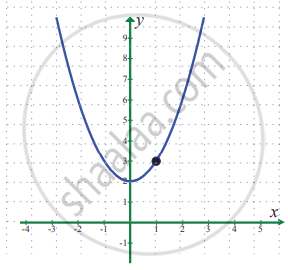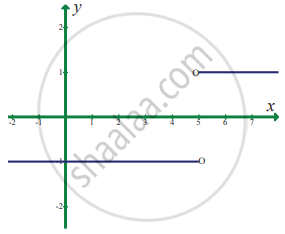Advertisements
Advertisements
प्रश्न
Show that `lim_("n" -> oo) 1/1.2 + 1/2.3 + 1/3.4 + ... + 1/("n"("n" + 1))` = 1
उत्तर
Tn = `1/("n"("n" + 1))`
`1/("n"("n" + 1)) = "A"/"n" + "B"/("n" +1)`
1 = A(n + 1) + Bn
Put n = 0
1 = A(0 + 1) + B × 0
A = 1
Put n = – 1
1 = A(– 1 + 1) + B(– 1)
1 = 0 – B
⇒ B = – 1
`1/("n"("n" + 1)) = 1/"n" - 1/("n" + 1)`
Tn = `1/"n" - 1/("n" + 1)`
T1 = `1/1- 1/2`
T2 = `1/2 - 1/3`
T3 = `1/3 - 1/4`
........................
........................
Tn = `1/"n" - 1/("n" + 1)`
T1 + T2 + .... + Tn = `(1/1 - 1/2) + (1/2 - 1/3) + (1/3 - 1/4) + .... + (1/"n" - 1/("n" + 1))`
T1 + T2 + .... + Tn = `(1 - 1/("n" + 1))`
`lim_("n" -> oo) ("T"_1 + "T"_2 + .... + "T"_"n") = lim_("n" -> oo) (1 - 1/("n" + 1))`
= `1 - lim_("n" -> oo) 1/("n" + 1)`
= 1 – 0
`lim_("n" -> oo) 1/1.2 + 1/2.3 + 1/3.4 + ... + 1/("n"("n" + 1))` = 1
APPEARS IN
संबंधित प्रश्न
Evaluate the following limit:
`lim_(y -> -3) [(y^5 + 243)/(y^3 + 27)]`
In the following example, given ∈ > 0, find a δ > 0 such that whenever, |x – a| < δ, we must have |f(x) – l| < ∈.
`lim_(x -> -3) (3x + 2)` = – 7
Evaluate the following :
`lim_(x -> 0) [(sqrt(1 - cosx))/x]`
In exercise problems 7 – 15, use the graph to find the limits (if it exists). If the limit does not exist, explain why?
`lim_(x -> 1) (x^2 + 2)`
In exercise problems 7 – 15, use the graph to find the limits (if it exists). If the limit does not exist, explain why?
`lim_(x -> 5) |x - 5|/(x - 5)`
Sketch the graph of f, then identify the values of x0 for which `lim_(x -> x_0)` f(x) exists.
f(x) = `{{:(sin x",", x < 0),(1 - cos x",", 0 ≤ x ≤ pi),(cos x",", x > pi):}`
If f(2) = 4, can you conclude anything about the limit of f(x) as x approaches 2?
If the limit of f(x) as x approaches 2 is 4, can you conclude anything about f(2)? Explain reasoning
Evaluate : `lim_(x -> 3) (x^2 - 9)/(x - 3)` if it exists by finding `f(3^-)` and `f(3^+)`
Evaluate the following limits:
`lim_(sqrt(x) -> 3) (x^2 - 81)/(sqrt(x) - 3)`
Evaluate the following limits:
`lim_(x -> oo) (1 + 3/x)^(x + 2)`
Evaluate the following limits:
`lim_(x -> 0) (2^x - 3^x)/x`
Evaluate the following limits:
`lim_(x -> 0) ("e"^x - "e"^(-x))/sinx`
Evaluate the following limits:
`lim_(x -> ) (sinx(1 - cosx))/x^3`
Choose the correct alternative:
`lim_(x - oo) sqrt(x^2 - 1)/(2x + 1)` =
Choose the correct alternative:
`lim_(x -> 0) (8^x - 4x - 2^x + 1^x)/x^2` =
Choose the correct alternative:
The value of `lim_(x -> 0) sinx/sqrt(x^2)` is
The value of `lim_(x rightarrow 0) (sqrt((1 + x^2)) - sqrt(1 - x^2))/x^2` is ______.
